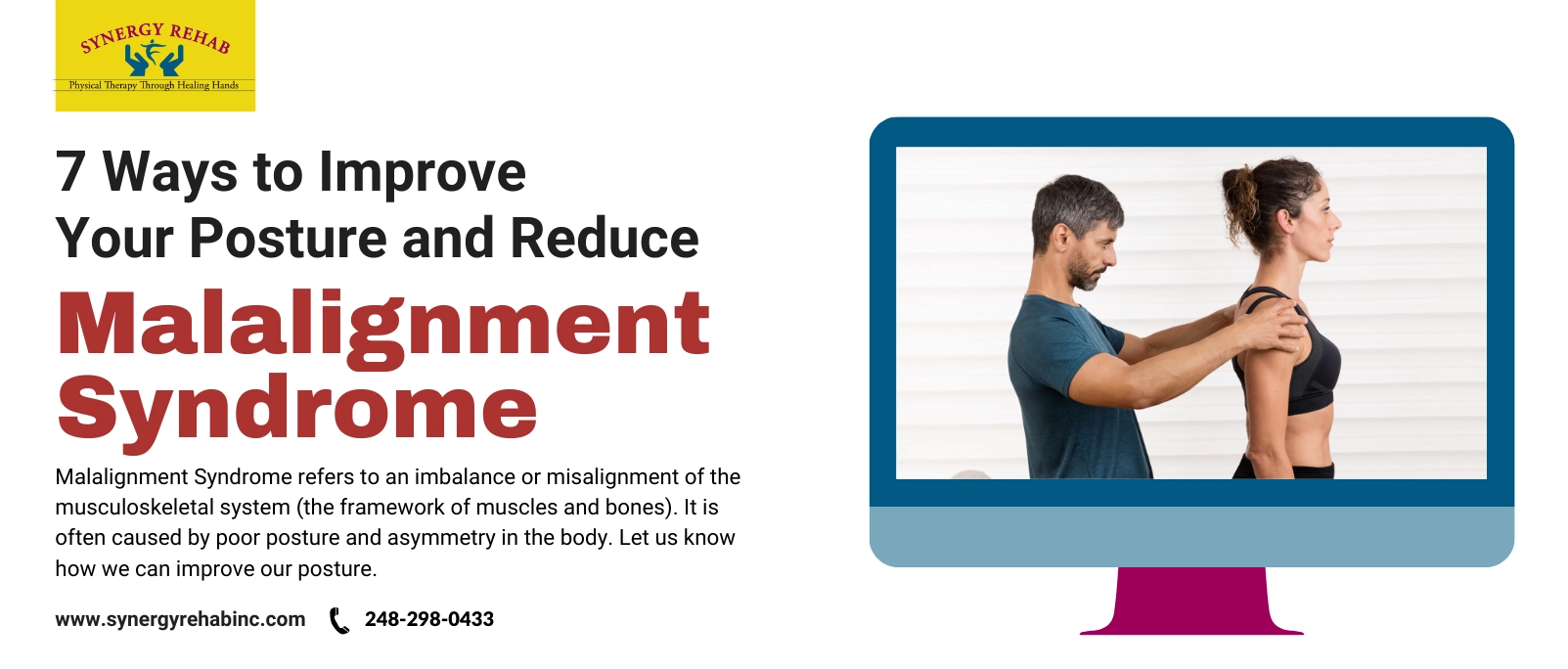Do you often find yourself slouched over your desk, hunching your shoulders, or experiencing discomfort in your back or neck? If so, you’re not alone.
Poor posture is a common issue that affects many of us, and it can lead to a condition known as Malalignment Syndrome.
In this blog, we’ll delve into what Malalignment Syndrome is, its causes, and, most importantly, seven effective ways to improve your posture and reduce the risk of this condition.
Let us first get familiar with malalignment syndrome in easy-to-understand language.
Malalignment Syndrome refers to an imbalance or misalignment of the musculoskeletal system (the framework of muscles and bones). It is often caused by poor posture and asymmetry in the body. It can manifest in various ways, such as tilted hips, uneven shoulders, or an imbalanced weight distribution on the feet. This condition can result from a combination of factors, including muscle imbalances, sedentary lifestyles, and improper biomechanics.
The Consequences of Malalignment Syndrome

Malalignment Syndrome can have some serious consequences for your overall health. Chronic poor posture can strain muscles and ligaments, leading to discomfort, pain, and reduced mobility. Additionally, it can affect joint function, potentially resulting in conditions like osteoarthritis. Therefore, addressing and correcting poor posture is essential to prevent long-term health issues.
Are you into a desk job or sedentary lifestyle and want to improve your posture to prevent or better the malalignment syndrome?
Here are 7 Effective Ways to Achieve a Better Posture
- Awareness: The first step in correcting poor posture is awareness. Pay attention to your body’s alignment throughout the day. Recognize when you’re slouching or leaning, and consciously make an effort to correct it.
- Ergonomics: Ensure that your workspace, whether at home or the office, is ergonomically designed. Invest in an adjustable chair, monitor stand, and keyboard to maintain a neutral spine position.
- Strengthen Core Muscles: A strong core stabilizes your spine and supports good posture. Incorporate exercises like planks and bridges into your routine to strengthen your core muscles.

- Stretch Regularly: Stretching helps release tension in tight muscles and improves flexibility. Focus on stretching your chest, hip flexors, and hamstrings to counteract the effects of prolonged sitting.
- Postural Exercises: Engage in exercises specifically designed to improve posture, such as chin tucks, wall angels, and scapular retractions. These exercises target muscles that support proper alignment.
- Regular Movement: Avoid sitting for extended periods. Set reminders to stand, walk, or change positions throughout the day. Consider a standing desk to reduce the time spent sitting.
- Professional Guidance: Consult with a qualified physical therapist specializing in posture correction. They can assess your specific alignment issues and provide tailored exercises and recommendations.
The Role of a Physical Therapist

The best physical therapist in Southfield plays a crucial role in identifying and addressing physical therapy for Malalignment Syndrome. They can conduct a comprehensive evaluation of your posture and movement patterns, pinpointing areas of concern. Based on their assessment of the root causes and underlying issues, they will develop a personalized treatment plan to target muscle imbalances, improve alignment, and alleviate pain or discomfort.
The Parting Thought
Poor posture and Malalignment Syndrome are not inevitable. By taking proactive steps to improve your posture and seeking guidance from a qualified physical therapist, you can prevent the adverse effects of this condition. Remember, small changes in your daily habits can lead to significant improvements in your posture and overall well-being. Prioritize your posture today for a healthier, pain-free tomorrow.
Looking for the best physical therapist in Southfield to help with your posture and musculoskeletal concerns?
Contact us today to schedule an appointment and start your journey toward improved posture and better health.




